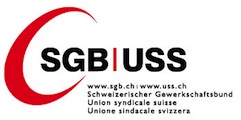Publications des institutions partenaires
Strategic technology adoption and hedging under incomplete markets
We investigate the implications of technological innovation and non-diversifiable risk on entrepreneurial entry and optimal portfolio choice. In a real options model where two risk-averse individuals strategically decide on technology adoption, we show that the impact of non-diversifiable risk on the option timing decision is ambiguous and depends on the frequency of technological…
Institution partenaire
English / 01/08/2017
Mitigating Global Warming: A Real Options Approach
Mitigation and adaptation represent two solutions to the issue of global warming. While mitigation aims at reducing CO2 emissions and preventing climate change, adaptation encompasses a broad scope of techniques used to reduce the impacts of climate change once they have occurred. Both have direct costs on a country’s Gross Domestic Product, but costs also arise from temperature…
Institution partenaire
English / 01/08/2017
In the short run blasé, In the long run risqué
We identify the impact of short-term interest rates on credit risk-taking in the short and long run by analyzing a comprehensive credit register from Spain, a country where for the last twenty years monetary policy was mostly decided abroad. Duration analyses show that lower overnight rates prior to loan origination lead banks to lend more to borrowers with a worse credit history and…
Institution partenaire
English / 01/08/2017
A default system with overspilling contagion
In classical contagion models, default systems are Markovian conditionally on the observation of their stochastic environment, with interacting intensities. This necessitates that the environment evolves autonomously and is not influenced by the history of the default events. We extend the classical literature and allow a default system to have a contagious impact on its environment…
Institution partenaire
English / 18/07/2017
The identification of beliefs from asset demand
The demand for assets as prices and initial wealth vary identifies beliefs and attitudes towards risk. We derive conditions that guarantee identification with no knowledge either of the cardinal utility index or of the distribution of future endowments or payoffs of assets; the argument applies even if the asset market is incomplete and demand is observed only locally.
Institution partenaire
English / 01/07/2017
Market uncertainty and risk transfer in REDD projects
The central role played by deforestation in the increase in global CO2 emissions has recently justified the development of new schemes which offer compensation in exchange for reductions in emissions from deforestation (Reducing Emissions from Deforestation and Forest Degradation, REDD). The design of REDD projects can be based on market prices to set how deforesters are compensated…
Institution partenaire
English / 01/07/2017
The International Diversification of Banks and the Value of Their Cross-Border M&A Advice
Institution partenaire
English / 01/07/2017
From the decompositions of a stopping times to risk premium decompositions
The occurrence of some events can impact asset prices and produce losses. The amplitude of these losses are partly determined by the degree of predictability of those events by the market investors, as risk premiums build up in an asset price as a compensation of the anticipated losses. The aim of this paper is to propose a general framework where these phenomena can be properly…
Institution partenaire
English / 01/06/2017
Robust normal mixtures for financial portfolio allocation
A new approach for multivariate modelling and prediction of asset returns is proposed. It is based on a two-component normal mixture, estimated using a fast new variation of the minimum covariance determinant (MCD) method made suitable for time series. It outperforms the (shrinkage-augmented) MLE in terms of out-of-sample density forecasts and portfolio performance. In addition to…
Institution partenaire
English / 01/06/2017
How Investment Performance Affects the Formation and Use of Beliefs
This study provides new insights on how investors form beliefs about future asset prices and how they use these beliefs for their trading decisions. Compared to the objective Bayesian benchmark, investors become overly optimistic when they face a paper loss. In addition, selling decisions are less sensitive to beliefs than purchase decisions. This difference is driven by selling…
Institution partenaire
English / 22/05/2017
The Univariate Collapsing Method for Portfolio Optimization
The univariate collapsing method (UCM) for portfolio optimization is based on obtaining the predictive mean and a risk measure such as variance or expected shortfall of the univariate pseudo-return series generated from a given set of portfolio weights and multivariate set of assets under interest and, via simulation or optimization, repeating this process until the desired portfolio…
Institution partenaire
English / 05/05/2017
What are asset demand tests of expected utility really testing?
Assuming the classic contingent claim setting, a number of financial asset demand tests of Expected Utility have been developed and implemented in experimental settings. However the domain of preferences of these asset demand tests differ from the mixture space of distributions assumed in the traditional binary lottery laboratory tests of von Neumann-Morgenstern Expected Utility…
Institution partenaire
English / 01/05/2017
Income taxes, sorting and the costs of housing: evidence from municipal boundaries in Switzerland
We provide novel evidence on the role of income taxes for housing rents and spatial sorting. Drawing on comprehensive micro-level data, we estimate the responsiveness of households to tax differentials across municipal boundaries. Correcting for unobservable location characteristics and isolating the residential sorting component, we identify an income tax elasticity of rents of…
Institution partenaire
English / 01/05/2017
Re-use of collateral: Leverage, volatility, and welfare
We assess the quantitative implications of the re-use of collateral on financial market leverage, volatility, and welfare within an infinite-horizon asset-pricing model with heterogeneous agents. In our model, the ability of agents to re-use frees up collateral that can be used to back more transactions. Re-use thus contributes to the build-up of leverage and significantly increases…
Institution partenaire
English / 21/04/2017
A Two-Factor Cointegrated Commodity Price Model with an Application to Spread Option Pricing
In this paper, we propose an easy-to-use yet comprehensive model for a system of cointegrated commodity prices. While retaining the exponential affine structure of previous approaches, our model allows for an arbitrary number of cointegration relationships. We show that the cointegration component allows capturing well-known features of commodity prices, i.e., upward sloping (…
Institution partenaire
English / 01/04/2017
The Impact of Culture on Loss Aversion
Based on the literature on the relationship between culture, emotion, and loss aversion, we derive that culture can influence the degree of loss aversion. To test our hypotheses, we conduct a standardized survey in 53 countries worldwide that includes the questions from the Hofstede survey on cultural dimensions as well as lottery questions on loss aversion. The results show that…
Institution partenaire
English / 01/04/2017
Estimating cumulative prospect theory parameters from an international survey
We conduct a standardized survey on risk preferences in 53 countries worldwide and estimate cumulative prospect theory parameters from the data. The parameter estimates show that significant differences on the cross-country level are to some extent robust and related to economic and cultural differences. In particular, a closer look on probability weighting underlines gender…
Institution partenaire
English / 01/04/2017
Pricing and Disentanglement of American Puts in the Hyper-Exponential Jump-Diffusion Model
We analyze American put options in a hyper-exponential jump-diffusion model. Our contribution is threefold. Firstly, by following a maturity randomization approach, we solve the partial integro-differential equation and obtain a tight lower bound for the American option price. Secondly, our method allows us to disentangle the contributions of jump and diffusion for the American early…
Institution partenaire
English / 01/04/2017
A survival analysis of islamic and conventional banks
Are Islamic banks inherently more stable than conventional banks? We address this question by applying a survival analysis based on the Cox proportional hazard model to a comprehensive sample of 421 banks in 20 Middle and Far Eastern countries from 1995 to 2010. By comparing the failure risk for both bank types, we find that Islamic banks have a significantly lower risk of failure…
Institution partenaire
English / 01/04/2017
Seiten
Le portail de l'information économique suisse
© 2016 Infonet Economy












